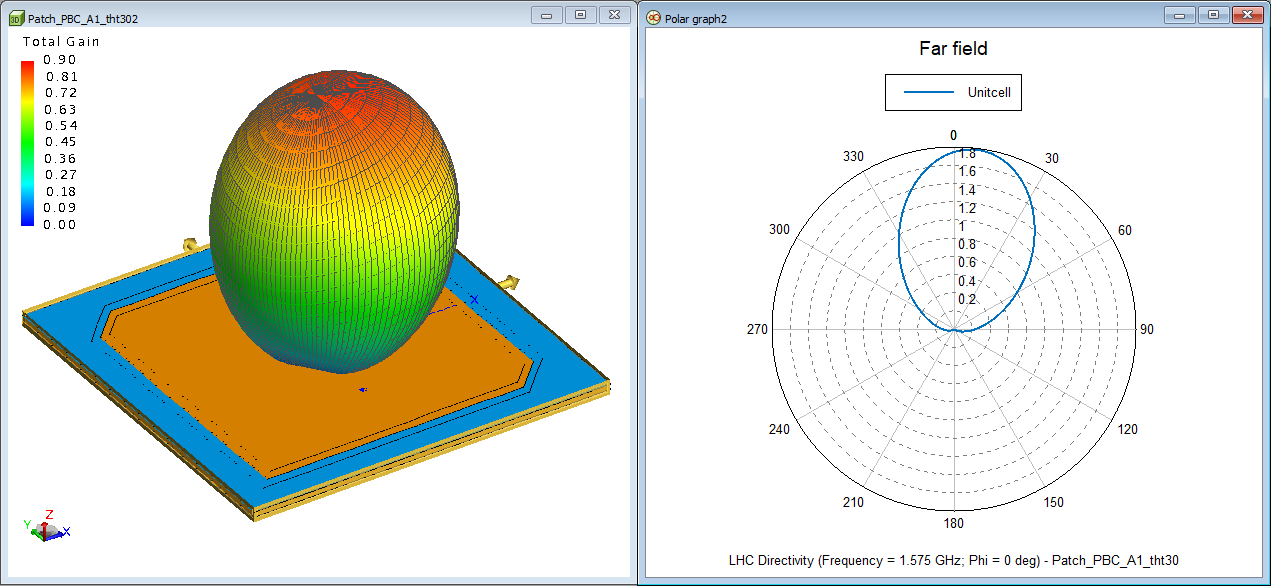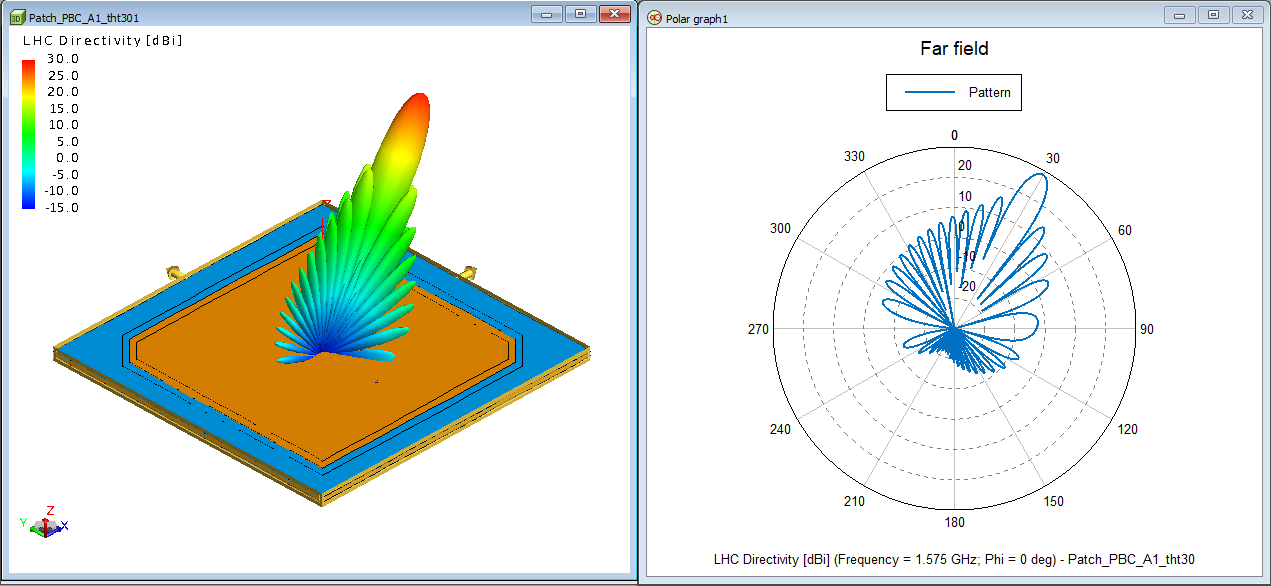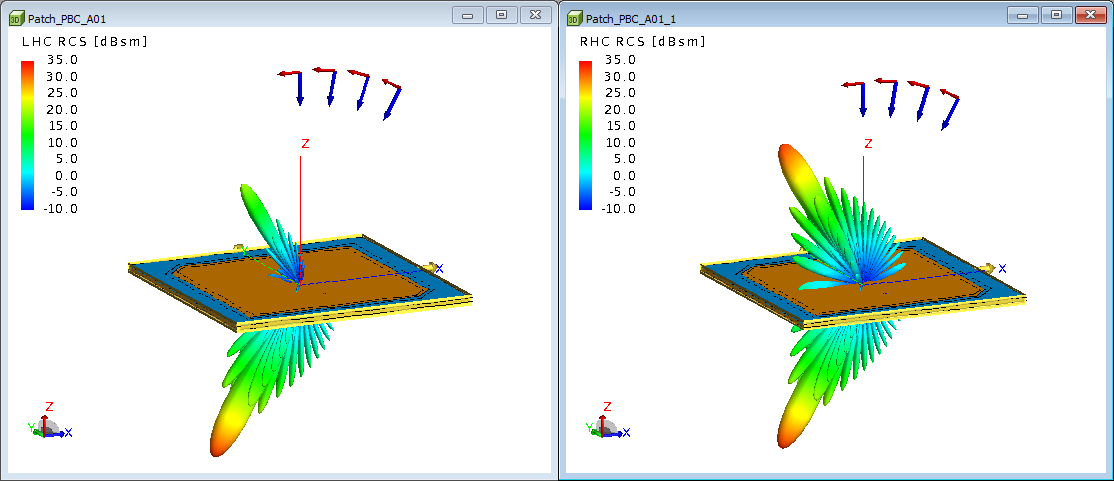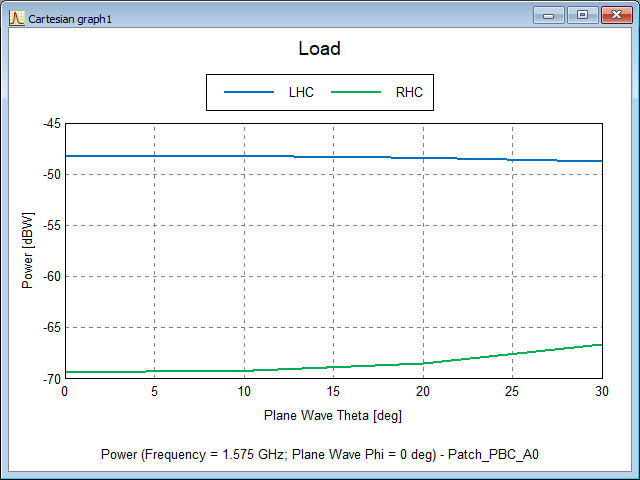How to Interpret Far Fields Calculated from a PBC Solution
This How-To helps to interpret far-fields (total and scattered) calculated with the periodic boundary condition (PBC) solution.
For the PBC solution, the default far field is calculated from the solution of a single unit cell radiating in free space. The PBC unit cell solution is obtained for an infinite array, meaning all the array element currents/fields are the same.

Figure 1. The truncated patch PBC unit cell geometry.
- The PBC patch is exited with a voltage source with a specified beam pointing angle.
- The PBC patch is excited with a plane wave, and the port is loaded with 50 Ohm.
Voltage Source Excitation

Figure 2. The LHC far field directivity pattern of the unit cell.

Figure 3. The LHC far field directivity of a 21x21 element array excited uniformly. Only the unit cell geometry is displayed in the 3D view.
Plane Wave Excitation
The PBC solution is obtained for two sets of incident plane waves: one with left-hand circular polarisation (LHC) and another with right-hand circular (RHC) polarisation. Request the bi-static far field for the unit cell (default) and a 21x21 element array.

Figure 4. The co-polarised bi-static RCS for the 21x21 array with incident angle (theta_i, phi_i} = {30, 0}. Left: LHC polarised plane wave; Right: RHC polarised plane wave.
The total near field, which includes the plane wave field contribution, below the unit cell will be zero. Numerically it will have some finite (but insignificant small) level due to the discrete nature of the current solution, typically >40 dB below the incident field level.
The patch array reflects less power when the incident polarisation is matched (LHC), compared to when the incident polarisation is mismatched (RHC).

Figure 5. The co-polarised bi-static RCS for the 21x21 array with incident angle (theta_i, phi_i} = {30, 0}. Left: LHC polarised plane wave; Right: RHC polarised plane wave.